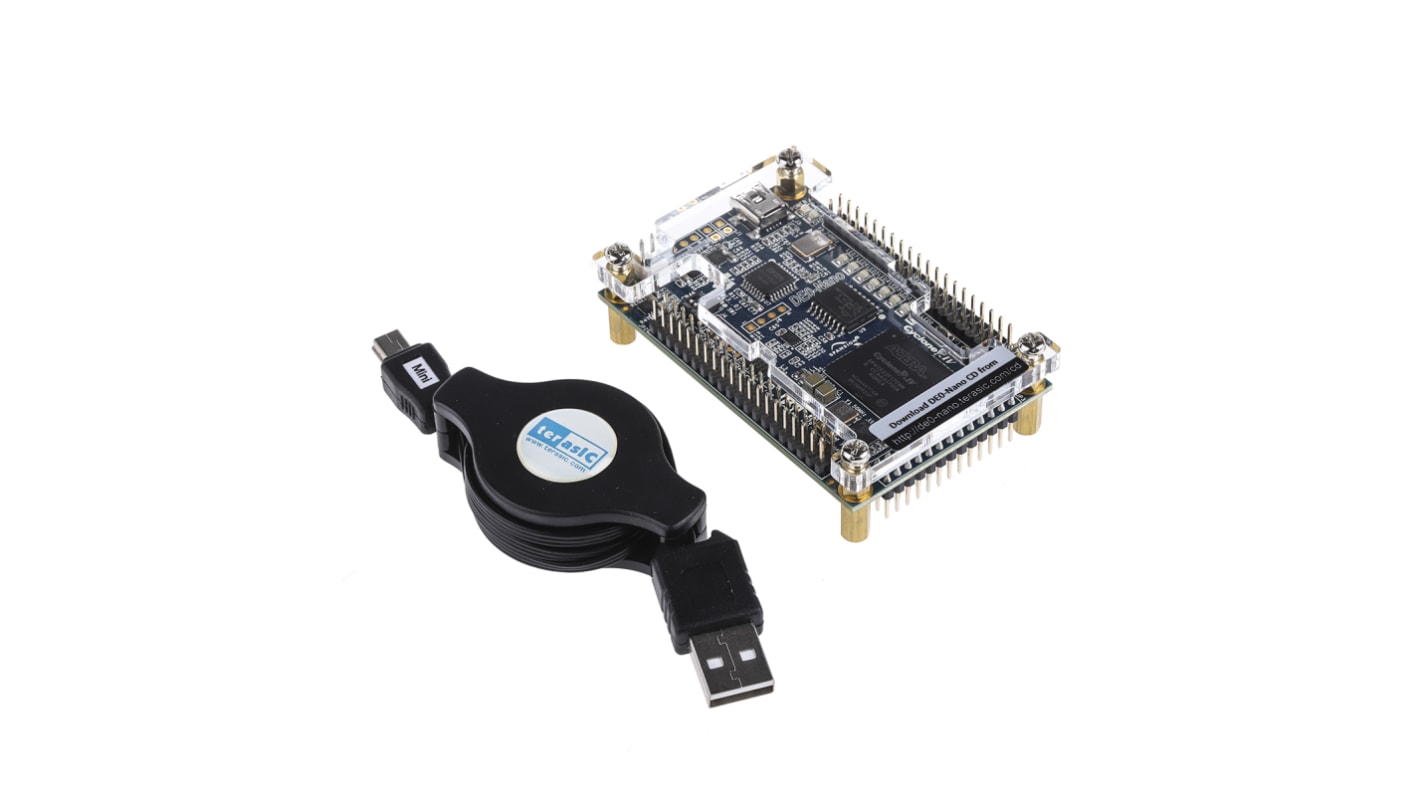Bulk discount available
Subtotal (1 unit)*
£122.20
(exc. VAT)
£146.64
(inc. VAT)
FREE delivery for orders over £50.00
In Stock
- 33 unit(s) ready to ship
- Plus 2 unit(s) ready to ship from another location
- Plus 20 unit(s) shipping from 27 October 2025
Need more? Click ‘Check delivery dates’ to find extra stock and lead times.
Units | Per unit |
|---|---|
| 1 - 1 | £122.20 |
| 2 - 4 | £119.07 |
| 5 + | £116.09 |
*price indicative
- RS Stock No.:
- 768-9039
- Mfr. Part No.:
- P0082
- Brand:
- Terasic
Specifications
Technical Reference
Legislation and Compliance
Product Details
Find similar products by selecting one or more attributes.
Select all | Attribute | Value |
|---|---|---|
| Brand | Terasic | |
| Kit Classification | Starter Kit | |
| Kit Name | Cyclone IV Deo-Nano | |
Select all | ||
|---|---|---|
Brand Terasic | ||
Kit Classification Starter Kit | ||
Kit Name Cyclone IV Deo-Nano | ||
Cyclone IV DE0-Nano Starter Kit
The DE0-Nano board introduces a compact-sized FPGA development platform suited for prototyping circuit designs such as robots and "portable" projects. The board is designed, to be used in the simplest possible implementation targeting the Cyclone IV device with up to 22320 LEs.
The advantages of the DE0-Nano board include its size, weight and its ability to be reconfigured without carrying superfluous hardware. These features set it apart from other general purpose development boards.
Parallax has made all the design files for their 8-core Propeller microcontroller Open Source. Details of how to program the DE0-Nano as a Propeller together with all the necessary files can be found at:
http://www.parallax.com/microcontrollers/propeller-1-open-source
The advantages of the DE0-Nano board include its size, weight and its ability to be reconfigured without carrying superfluous hardware. These features set it apart from other general purpose development boards.
Parallax has made all the design files for their 8-core Propeller microcontroller Open Source. Details of how to program the DE0-Nano as a Propeller together with all the necessary files can be found at:
http://www.parallax.com/microcontrollers/propeller-1-open-source
Altera Cyclone IV EP4CE22F17C6N FPGA, 22320 x Logic Elements, 594Kb memory, 66 x multipliers, 4 x PLLs, Maximum 153 x I/O pins
64 MB configuration Flash memory
50 MHz clock oscillator
32 MB SDRAM
2Kb I2C EEPROM
ADXL345 3-axis accelerometer
ADC128S022, 8-Channel, 12-bit A/D Converter, 50ksps to 200ksps
8 x green LEDs
2 x debounced push buttons
4 x dip switches
Power supply: Mini USB connector (5 V), Two GPIO header pins (5 V), 2-pin external power header (+3.6 to +5.7 V)
On-board USB-Blaster circuit for programming
Two 40-pin headers provide 72 x digital I/O pins
One 26-pin header provides 16 x digital I/O pins and 8 x analogue input pins
64 MB configuration Flash memory
50 MHz clock oscillator
32 MB SDRAM
2Kb I2C EEPROM
ADXL345 3-axis accelerometer
ADC128S022, 8-Channel, 12-bit A/D Converter, 50ksps to 200ksps
8 x green LEDs
2 x debounced push buttons
4 x dip switches
Power supply: Mini USB connector (5 V), Two GPIO header pins (5 V), 2-pin external power header (+3.6 to +5.7 V)
On-board USB-Blaster circuit for programming
Two 40-pin headers provide 72 x digital I/O pins
One 26-pin header provides 16 x digital I/O pins and 8 x analogue input pins
Supplied with
USB cable, System CD, Altera complete design suite free package, Quick Start Guide
An FPGA is a semiconductor device consisting of a matrix of Configurable Logic Blocks (CLBs) connected through programmable interconnects. The user determines these interconnections by programming SRAM. A CLB can be simple (AND, OR gates, etc) or complex (a block of RAM). The FPGA allows changes to be made to a design even after the device is soldered into a PCB.

